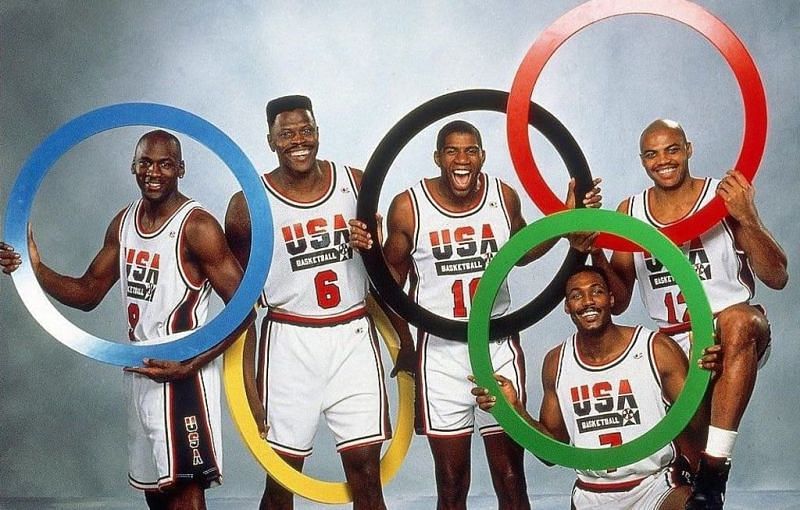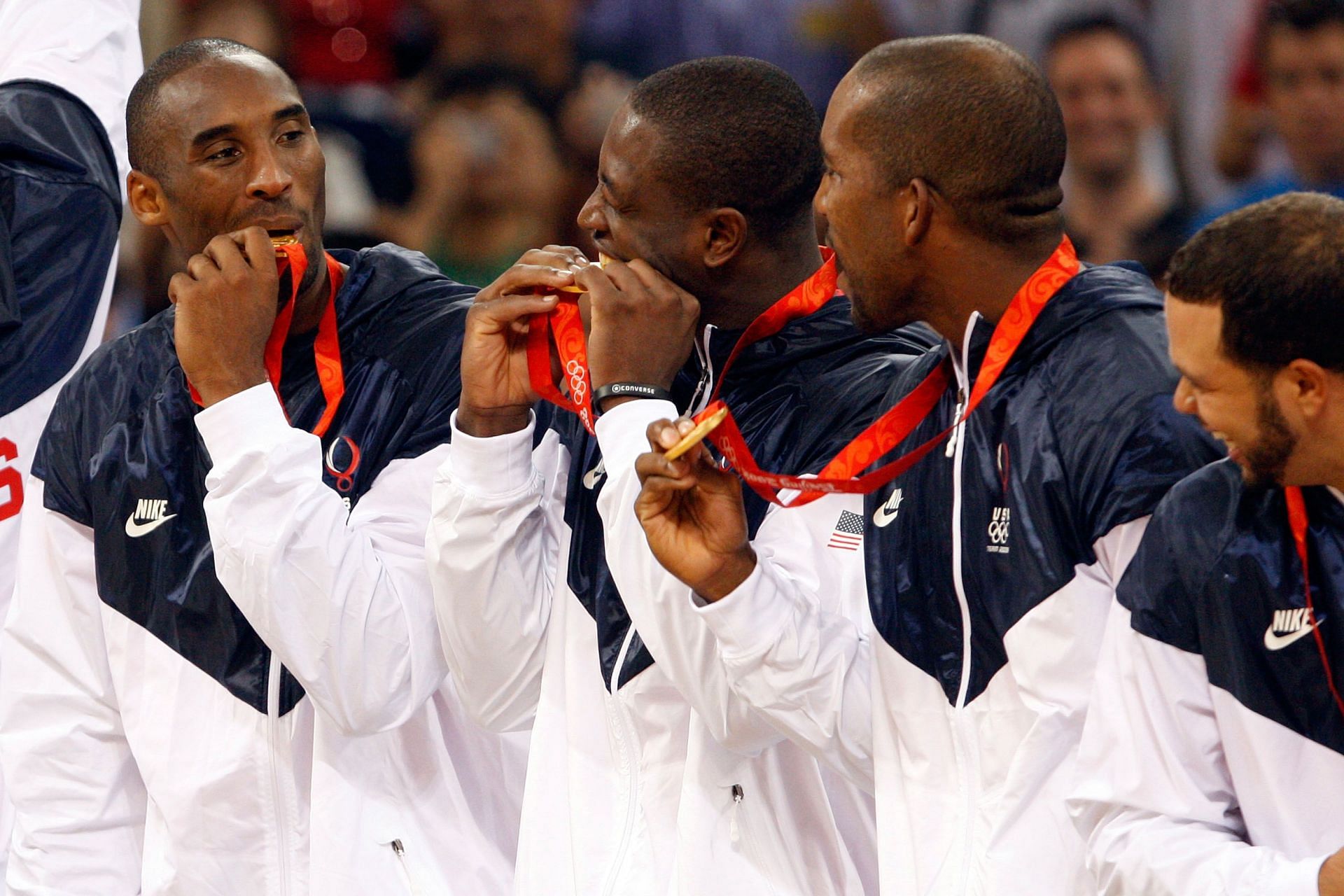History of Men’s Olympic Basketball: Men Olympic Basketball

The history of men’s basketball at the Olympics is a captivating story of athletic prowess, international rivalry, and the evolution of a global sport. From its humble beginnings as a demonstration sport to its current status as a cornerstone of the Summer Games, basketball has captured the imagination of millions worldwide.
The Birth of Olympic Basketball
The first appearance of basketball at the Olympics was in 1904, at the Summer Games in St. Louis, Missouri. However, it was only a demonstration sport, meaning it was not part of the official competition. The United States, unsurprisingly, dominated the exhibition, with the New York Athletic Club taking home the gold. This early inclusion signaled the potential of basketball to become a major Olympic sport.
The United States’ Dominance
The United States men’s basketball team has been a force to be reckoned with in Olympic history, achieving remarkable success and leaving an indelible mark on the sport. Their dominance began in 1936 at the Berlin Olympics, where they won the first official gold medal. The “Dream Team” of 1992, featuring NBA superstars like Michael Jordan, Magic Johnson, and Larry Bird, further solidified the United States’ reputation as a basketball powerhouse.
International Competition Takes Center Stage, Men olympic basketball
While the United States initially dominated, the international basketball landscape began to shift in the late 20th century. Teams from countries like Spain, Argentina, and Australia emerged as serious contenders, challenging the United States’ supremacy. This rise of international competition injected new excitement and dynamism into the Olympic basketball tournament.
Key Milestones in Olympic Basketball
The history of men’s Olympic basketball is marked by several significant milestones:
- 1904: Basketball is introduced as a demonstration sport at the St. Louis Olympics.
- 1936: Basketball becomes an official Olympic sport at the Berlin Olympics, with the United States claiming the first gold medal.
- 1948: The first Olympic basketball tournament held after World War II takes place in London.
- 1992: The iconic “Dream Team” of NBA superstars leads the United States to a dominant gold medal at the Barcelona Olympics.
- 2000: The United States faces a major challenge in the Sydney Olympics, narrowly defeating France in the final to secure the gold.
- 2008: Spain emerges as a formidable opponent, pushing the United States to the brink in the Beijing Olympics final, ultimately losing by a narrow margin.
Notable Players and Teams

The Olympic basketball court has witnessed the rise of legendary players who have shaped the game and left an indelible mark on its history. From the dominant Dream Team to the current national powerhouses, the evolution of playing styles has been a captivating spectacle. These players and teams have not only showcased extraordinary talent but have also inspired generations of basketball enthusiasts.
Impact of Individual Players
The impact of individual players on their respective teams and the sport as a whole is undeniable. Players like Michael Jordan, LeBron James, and Hakeem Olajuwon have transcended the game, becoming global icons. Michael Jordan, with his unparalleled athleticism and scoring prowess, led the Dream Team to a dominant victory in 1992, solidifying his status as a basketball legend. LeBron James, a modern-day titan, has consistently led the United States to Olympic success, showcasing his all-around brilliance and leadership. Hakeem Olajuwon, a defensive maestro, anchored the 1992 Dream Team, showcasing his unique skill set and defensive dominance.
Playing Styles of Dominant Teams
The Dream Team, assembled in 1992, redefined the game with its unmatched talent and dominance. They showcased a blend of athleticism, skill, and teamwork, leaving opponents in awe. Their fast-paced offense and suffocating defense set a new standard for international basketball. Current national powerhouses, like Spain and Argentina, have adopted a more strategic approach, emphasizing ball movement, team play, and disciplined defense. Their playing styles are characterized by a focus on team chemistry and adaptability, highlighting the evolution of the game.
Top 10 Scorers in Olympic Men’s Basketball History
| Rank | Player | Nationality | Team | Total Points |
|---|---|---|---|---|
| 1 | Oscar Schmidt | Brazil | Brazil | 1,093 |
| 2 | LeBron James | United States | United States | 689 |
| 3 | Carmelo Anthony | United States | United States | 633 |
| 4 | Kobe Bryant | United States | United States | 596 |
| 5 | Arvydas Sabonis | Lithuania | Lithuania | 565 |
| 6 | Dirk Nowitzki | Germany | Germany | 546 |
| 7 | Kevin Durant | United States | United States | 536 |
| 8 | Michael Jordan | United States | United States | 526 |
| 9 | Pau Gasol | Spain | Spain | 518 |
| 10 | Luis Scola | Argentina | Argentina | 510 |
Current Landscape and Future Prospects

The current landscape of men’s Olympic basketball is a dynamic tapestry woven with threads of globalization, technological advancement, and shifting power dynamics. The game has transcended its traditional boundaries, with new international teams emerging as formidable forces, challenging the established order and injecting fresh energy into the competition. The future of men’s Olympic basketball holds the promise of even greater excitement and innovation, as the sport continues to evolve and adapt to the changing global landscape.
The Rise of New International Teams
The emergence of new international teams has significantly reshaped the competitive landscape of men’s Olympic basketball. The rise of these teams is a testament to the growing popularity and development of the sport around the world. These teams bring with them a unique blend of talent, skill, and playing styles, adding new dimensions to the game. For example, the rise of Spain, Australia, and Argentina as consistent contenders has made the competition more unpredictable and exciting. These teams have demonstrated that they can compete with the traditional powerhouses, pushing the boundaries of what is possible in international basketball.
The Impact of New Rules and Regulations
The introduction of new rules and regulations has also had a significant impact on the game. These changes have been implemented to address various issues, such as promoting offensive flow, reducing physicality, and ensuring player safety. For example, the implementation of the shot clock in international basketball has encouraged faster-paced games with more scoring opportunities. The changes to the rules regarding traveling and offensive fouls have also led to a more fluid and entertaining style of play. These changes have undoubtedly impacted the game, influencing strategies, tactics, and the overall style of play.
Future Prospects of Men’s Olympic Basketball
The future of men’s Olympic basketball is brimming with exciting possibilities. The continued globalization of the sport will likely lead to even more competitive balance, with new teams emerging as contenders. Technological advancements, such as the use of analytics and virtual reality training, will further enhance the game and provide players with new tools for improvement. The growing popularity of basketball in emerging markets will also contribute to the sport’s global growth, creating a more diverse and exciting playing field.
Challenges and Opportunities
The future of men’s Olympic basketball presents both challenges and opportunities. One of the key challenges is ensuring the continued growth and development of the sport in emerging markets. This requires investing in infrastructure, coaching, and talent development programs to nurture the next generation of players. Another challenge is maintaining the balance between the established powerhouses and the emerging teams, ensuring that the competition remains exciting and unpredictable. However, these challenges also present significant opportunities. The growing global interest in basketball creates a platform for expanding the sport’s reach and influence, attracting new audiences and generating new revenue streams. The opportunity to leverage technology to enhance the game, improve player performance, and engage fans is also vast.
Men olympic basketball – Watching the men’s Olympic basketball team play is like witnessing a symphony of athleticism and strategy. It’s a reminder that even the most intense competition can be enjoyed with a sense of comfort and convenience. Imagine yourself cheering on your favorite team while relaxing on a self-inflating camping chair – the perfect blend of portability and support.
Just like those athletes, you too can conquer any challenge, whether it’s a long day at the park or an epic camping trip, with the right tools and a positive attitude.
The men’s Olympic basketball tournament is a showcase of athleticism and teamwork, demanding intense focus and stamina. Imagine the players returning to their homes after a grueling game, seeking comfort and relaxation in a mainstays faux leather chair.
Just as the chair provides a welcoming respite, the Olympic stage allows athletes to display their skills and inspire millions worldwide.
